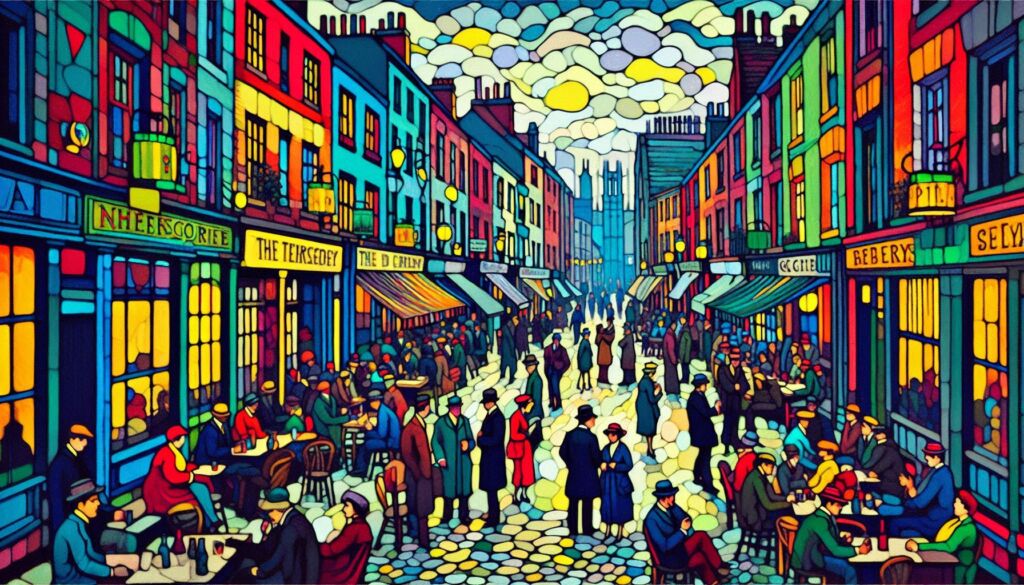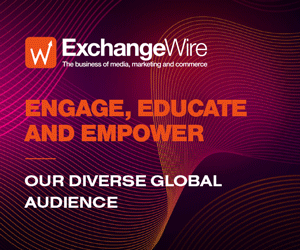If Social Media Isn’t Social, Where Else Can Brands Build Deeper Connections?
by on 30th Jul 2025 in News

In the concluding part of his social media trilogy, Dan Gee of Media Futures Market looks beyond social media, to the next stage of brand communications...
Catch-up on part one and part two
Something has shifted, and it’s not just the algorithm. Again.
As I've covered here previously, social platforms have quietly stopped being social. What began as public spaces for conversation and connection have become ad delivery mechanisms to passive consumers, optimised for time on platform, by hook or by crook.

Little by little, people are no longer posting. They’re lurking, scrolling, but passive. They’re moving to smaller, quieter corners: Discord servers, Substacks, Reddit threads. Places with a sense of curation. Places where not everything is an ad or a performance. Places where the tone is different, and so are the expectations.
This is the end of the feed era. Not the end of platforms, not the end of attention, but the end of the illusion that social media is where culture happens. That idea is done. What remains is media: commodified and decontextualised. And we need to stop treating it like it’s anything else.
That matters because too many marketers are still chasing a ghost. So the question for marketers looking for competitive advantage isn’t "how do we win in social?". It’s "where do we go now that social has stopped being social?"
Not just to get noticed. But to actually matter.
To answer that, we have to stop thinking in formats and start thinking in behaviours. Where are people actually spending time? Who do they trust? What will make their lives easier, more affordable, more secure, more comfortable, more fun?
The brands doing well right now aren’t necessarily the loudest or the most optimised. They’re the ones finding quieter, more deliberate ways to show up. Not just performatively, but usefully. In the right places. Whether it’s creators, communities, cultural partnerships, or context-led media, the edge now belongs to those who’ve clocked that connection still matters. But the way you earn it has changed.
In this piece, I've highlighted a few ways to address this change.
Backing creators over platforms
This isn’t new, but it’s maturing. The smart shift isn’t just moving budget from Insta to influencers, it’s treating creators as strategic partners, not media buys.
Unilever’s approach is worth noting. They’ve announced an increase in spend in social from 30% to 50%, but it appears that the driving force behind this shift is to become influencer-first. They will move a significant chunk of budget into long-term creator collaborations. Across categories, languages, and levels of fame. The key quote from new CEO, Fernando Fernandez, is "There are 19,000 Zip codes in India. There are 5,764 municipalities in Brazil. I want one influencer in each of them."
Why are they doing this? Because creators have something platforms lost: trust. An ad in an app that you know has helped rig elections, incite violence, and erode mental health just can't cut it against human storytellers.
Deloitte’s State of Social research supports this: high-performing brands are putting around 40–50% of their social spend into creator activity, often running multiple partnerships simultaneously. The results are telling. Higher engagement, better conversion, and stronger long-term brand impact.
The challenge will still be to extract oneself from the reassurance of guaranteed deliverables. But there's no competitive advantage taking that route. Growing market share and building your customer base isn’t about one-off #ad content. It’s about letting creators interpret your brand in ways that actually land with their audiences. And, critically, giving them the freedom to do it their way.
Retail, but interesting
Yes, the high street’s in trouble. No, physical retail isn’t dead. In fact, some brands are using it better than ever. Not just as distribution, but as theatre, as experiential marketing.
Take Jellycat. The cuddly toy company has seen surging growth and massive cultural relevance built with cult drop cycles, limited releases, and shopping as entertainment. Their Fish & Chips popup at Selfridges last summer was a sell out success. With people queuing up to get their limited edition toys from the Jellycat chip van. And they're back again this year, doubling down on the tactic. This doesn't just shift product though. It builds implied premium. Allowing the brand to price with confidence and build profits as chunky as their cuddly chips.
We see a similar appreciation for irl connection with Gymshark. The brand’s Birmingham HQ doubles as a public gym and barbershop. Simply named The Gymshark Lifting Club, it’s not a campaign, it’s a commitment to staying rooted in the culture that built them. Their events feel more like gatherings than activations. It works because it’s not forced. It is grounded in the body building culture that delivered the early years hockey stick growth for the business. For further evidence that this community oriented approach is good for business, there's also a line of GSLC merch, another way for brand fans to buy into a culture and community that means something to them.
Both are good reminders that when everyone’s optimising digital touchpoints, physical presence can be a differentiator. Especially when it’s done with conviction and the audience experience front of mind.
Cultural partnerships that are additive, not extractive
Sponsorship’s having a quiet resurgence. But it is at its most effective when done as an integrated piece of marcomms. Not just logos slapped on a stage with pitchside hoarding, and an executive handing out medals, but genuine participation in a culture that fits the brand.
Rather than just chasing chart‑toppers, Adidas Originals partnered with COLORSxSTUDIOS for its Club Originals campaign. Combining emerging musical and artistic talent in minimalist settings that privilege creators over advertising. In 2025, they launched an Abbey Road–engineered recording space within Manchester’s Co-op Live, offering truly inclusive access, mentorship, and creative infrastructure, a strategic move that builds cultural credibility and long‑term connection over one‑off spectacle.
Lego also evolved their approach. It doesn’t just market to its community, it builds with them. Through the Lego Ideas platform, fans can submit designs, vote on favourites, and see their creations turned into actual kits. Winners are credited, compensated, and celebrated.
It invites fans into the process in a way that feels generous, not tokenistic. It gives the community a sense of ownership, not just acknowledgement.
NordVPN’s sponsorship of Critical Role (a massive tabletop RPG stream, for the uninitiated) is another good example. It’s patient, ongoing support of a community that respects boundaries and values authenticity. They cede creative control of the ad spot. Instead of a scripted host reads, the creators of the show stage hilarious off-beat sketches with NordVPN’s brand baked in. That buys the brand long-term cultural permission in a space full of early adopters, technophiles, and decision-makers. This has resulted in show fans compiling playlists of their favourite NordVPN ads and even a dedicated 4hr stream that's been watched almost 700,000 times on YouTube alone.
Communities > channels
Here’s where the ghosts of social media are starting to reassemble, just not where you'd expect.
Discord, for example, has become the platform of choice for everything from indie brands to global fanbases. Not as a megaphone, but as a clubhouse. It's not the place to run ads or drop brand slogans. It’s where you build something slower. User by user, conversation by conversation. For example, this is where Midjourney built their generative AI user base (and product) in a pseudo exclusive public forum. Generating user feedback in real time.
Same with Reddit. The brands that do well there aren’t the ones shouting loudest, they’re the ones who show up with value and a sense of the room. Sponsor an AMA. Genuinely answer questions. Respect the tone. It’s not mass media, but if you get it right, it’s loyalty gold. And scaling in reach as well as relevance. If you want more proof of Reddit's relevance, it is frequently showing up as one of the most widely referenced sources by the LLMs vying for AI dominance.
Bluesky, Mastodon, and other decentralised platforms are still early-stage, but culturally rich. These are places where the digitally curious are rebuilding their own networks. Don’t go in chasing scale. Go in to listen and learn. Quiet participation can become first-mover advantage.
Rediscover the classics
In all this searching for opportunity amid change, it's all too easy to forget the fundamentals. To underinvest in channels that may be harder to quantify, and bereft of novelty, but which deliver trusted, cost effective reach.
As the body of work researching the importance of attention for advertisers expands, one of the themes that keeps coming back is the power of channels like TV, radio, and press in delivering disproportionate levels of attention. And it turns out that factoring actual human attention into your media planning is a fast track to greater profitability.
These channels, together with OOH, are also brilliant multipliers working in concert with digital media.
So as you rebalance your plans for this post-social era, make sure to consider the classics.
All sounds a lot like comms planning
That’s because it is! Let’s be clear: this is not a sentimental argument for bringing back the good old days of social media, or of any kind of rose tintery. It’s a commercial one.
If you want to grow, you need to start with your market. Know your audience. Know your subsets and where you have the best chance of finding people receptive to your presence.
From there, you find the most credible, commercially effective way to show up. And when social media stops delivering one of the key tenets of its appeal, it’s time to rethink.
Sometimes that means backing a creator who already commands trust in your category. Sometimes it’s a retail experience that makes your product feel more valuable. Sometimes it’s looking at the mountains of research that says high quality media drives business results in the short and the long of it.
It's about finding a better balance in a post-social era.
In the end, the brands that win in this environment are not the ones with the biggest budget or the noisiest presence. They’re the ones with the clearest sense of their audience, the sharpest instincts about where to meet them, and the patience to build something valuable, not just visible.









Follow ExchangeWire